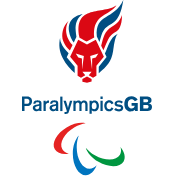GSS2117 - Natalie Doman Blog#7
Paralympics Sports Medicine and Science
By classifying athletes with physical disabilities according to the severity of their condition and how it affects their ability to compete, Paralympic classification systems aim to guarantee fair competition. Based on the International Classification of Functioning, Disability, and Health (ICF), classification entails evaluating body structure (e.g., limb deficit, short stature), activity limits, and impairments of bodily functions (e.g., muscle strength, coordination). Four steps make up the classification process: evaluating the athlete's health, verifying eligibility, identifying the extent of the impairment, and allocating the right competition class. Although it is still difficult to obtain consistent and trustworthy results, current methods rely on a variety of evaluation techniques, including manual muscle testing, goniometry, and coordination examinations. Combining sport-specific activities, new motor tasks, impairment evaluation, and the athlete's training history are all part of best practices. More evidence-based techniques are still required to guarantee fairness, even though the International Paralympic Committee (IPC) has created rules to standardize classification processes. Physical medicine and rehabilitation (PM&R) professionals can help by suggesting athletes for classification or by becoming certified classifiers, although there aren't enough competent people in the field. In order to improve classification schemes and make them more visible and successful in encouraging participation in Paralympic sports, additional study is required.
ParalympicsGB Classification Explainer -
In the video, the essential function of classification in para sport is dissected, with particular emphasis placed on the requirement of classification in order to establish a level playing field and meaningful competition among athletes with disabilities. While highlighting the fact that success in parasport entails more than just classification, it provides an overview of the classification process, the responsibilities that classifiers play, and the implications that result from misrepresentation.
Introduction to Classification -
An explanation of the classification system for athletes with disabilities in parasport is provided in the video. This method is intended to provide fair and equal competition by grouping athletes who have similar limits in terms of their activities. In addition to discussing the eligibility requirements, the different types of impairments that are taken into consideration, and the classification procedure, it also underlines the significance of national and international evaluations for athletes who want to compete at the highest levels.
Paralympics Cheating - https://www.si.com/olympics/2020/03/03/paralympiccheating
Jessica Long, a swimmer, is generally cited as an example of the growing worry around cheating in the Paralympic swimming community. Long is disillusioned with a classification system that permits certain competitors to allegedly falsify their disability. The article discusses the growing issue regarding cheating in the Paralympic swimming community. The problem has given rise to concerns over the honesty of para-athletics and has resulted in complaints being made in public by both athletes and their parents. This situation poses a challenge to the future of the sport as it continues to garner more prominence and financial support. The appeal of increased sponsorships and financing, according to Long and others, generates considerable incentives for athletes to manipulate classification, which undermines fair competition. There are also additional arguments that support this position.







Comments
Post a Comment